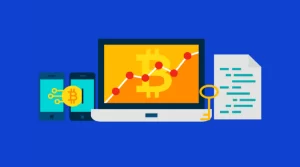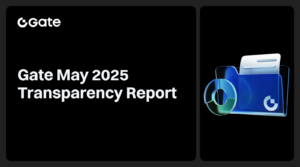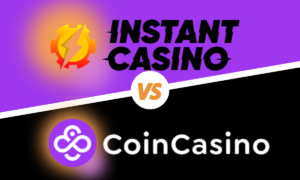
Benefits of DeFi Lending: Empowering Financial Inclusion
The world of finance has undergone a significant transformation in recent years, thanks to the emergence of decentralized finance (DeFi). One of the key aspects of DeFi is lending, which has revolutionized the way people access financial services. In this article, we will explore the benefits of DeFi lending, focusing particularly on how it empowers financial inclusion. By leveraging blockchain technology and smart contracts, DeFi lending opens up new avenues for individuals who have traditionally been excluded from the formal banking system. So, let’s dive in and discover how DeFi lending is transforming the financial landscape.
Introduction
Financial inclusion is a crucial goal for societies worldwide. It aims to provide equal access to financial services, such as loans and credit, to individuals and communities that have been marginalized by traditional banking systems. However, traditional financial institutions often impose high barriers to entry, leaving many people underserved or completely excluded. This is where decentralized finance and DeFi lending step in, offering a more inclusive and accessible alternative.
What is DeFi Lending?
DeFi lending is a financial innovation that leverages blockchain technology. Smart contracts to enable lending and borrowing activities in a decentralized and transparent manner. It eliminates the need for traditional intermediaries, such as banks or lending institutions,. It allows individuals to participate directly in the lending ecosystem.
The concept of Financial Inclusion
Financial inclusion aims to provide equal opportunities for individuals to access and use financial services. It recognizes that access to credit and capital is a fundamental requirement for economic growth and social development. However, traditional banking systems often fail to serve certain segments of the population, such as those with limited income, inadequate credit history, or lack of identification documents. DeFi lending offers a potential solution to these challenges by providing a decentralized and open financial ecosystem.
How Does DeFi Lending Work?
- Peer-to-Peer Lending: DeFi lending platforms connect lenders and borrowers directly, enabling peer-to-peer lending. Individuals looking to borrow digital assets can access these platforms and request loans, while lenders can offer their assets for lending. By eliminating intermediaries, DeFi lending allows participants to interact with each other directly, fostering a more efficient lending ecosystem.
- Collateralization: To secure a loan on a DeFi lending platform, borrowers typically need to provide collateral. Collateral acts as a form of assurance for lenders, ensuring that they can recover their funds even if the borrower defaults on the loan. The collateral is locked in a smart contract, which automatically releases it once the loan is repaid. The value of the collateral is often higher than the loan amount to mitigate potential losses due to market volatility.
- Smart Contracts: It play a central role in DeFi lending. These self-executing contracts, written in code, define the terms and conditions of the loan. They are deployed on the blockchain and automatically execute transactions based on predefined rules and triggers. Smart contracts ensure transparency, immutability, and trust in the lending process, as the terms are enforced without the need for intermediaries.
- Interest Rates and Loan Terms: The interest rates and loan terms in DeFi lending are typically determined by market dynamics and governed by the lending platform’s protocols. Lenders can set the interest rates they desire for lending their assets. While borrowers can compare available loan options and select the one that best suits their needs.
- Loan Repayment: In DeFi lending is usually facilitated through the smart contract. Borrowers are required to repay the loan within the agreed-upon timeframe, along with the accrued interest. Failure to repay the loan within the specified period can result in penalties, liquidation of collateral, or potential loss of the collateralized assets.
Benefits of DeFi lending for Financial Inclusion

- Accessibility and global reach: DeFi lending platforms are accessible to anyone with an internet connection, bypassing the need for physical branches or geographical proximity to financial institutions. This global reach breaks down the barriers faced by individuals residing in remote areas or underserved regions, granting them access to financial services previously out of their reach.
- Lower barriers to entry: Traditional lending often involves stringent eligibility criteria and extensive paperwork, making it difficult for many individuals to qualify for loans. DeFi lending platforms, on the other hand, leverage blockchain technology to simplify and streamline the lending process. These platforms typically have fewer requirements, making it easier for individuals to access loans without unnecessary delays or bureaucracy.
- Reduced dependence on traditional banking systems: By utilizing decentralized platforms, DeFi lending reduces reliance on traditional banking systems. This is particularly beneficial in regions where financial infrastructure is underdeveloped or unstable. DeFi lending empowers individuals to participate in the financial system without being subject to the limitations imposed by centralized intermediaries.
- Empowerment of unbanked populations: A significant portion of the global population remains unbanked, lacking access to basic financial services. DeFi lending can play a transformative role in empowering these individuals by enabling them to borrow funds, build credit histories, and engage in economic activities that were previously unattainable. This newfound financial agency contributes to poverty alleviation and economic empowerment.
- Lower interest rates and higher returns: In traditional lending, interest rates are often set based on a borrower’s credit history and the prevailing market conditions. This can result in high borrowing costs, especially for individuals with limited creditworthiness. DeFi lending platforms, on the other hand, leverage decentralized algorithms to determine interest rates, potentially leading to lower borrowing costs for borrowers. It also providing lenders with the opportunity to earn higher returns on their investments.
Strategies for mitigating risks in DeFi lending
- Due diligence and research: Before participating in any DeFi lending platform, it is crucial to conduct thorough due diligence. Research the platform’s reputation, security measures, audits, and community feedback. Look for platforms that have undergone independent security audits and have a strong track record of transparency and reliability. Additionally, stay updated on security best practices and follow guidelines provided by the platform.
- Diversification of assets: Diversification is a key risk management strategy in any investment. Instead of relying solely on a single DeFi lending platform, consider diversifying your investments across multiple platforms and assets. By spreading your investments, you can mitigate the impact of a potential failure or exploit on any particular platform. Diversification helps to reduce concentration risk and provides a safety net in case of unforeseen events.
- Monitoring and staying informed: Stay actively engaged in the DeFi community and stay informed about the latest developments, news, and security practices. Regularly monitor the platforms you are involved in and be cautious of any suspicious activities or changes in market conditions. By staying informed, you can be proactive in identifying and addressing potential risks. Participate in community forums, follow reputable influencers and thought leaders in the DeFi space, and keep up with the latest industry trends.
- Setting conservative borrowing limits: When participating in DeFi lending, it is important to set conservative borrowing limits that align with your risk tolerance and financial capabilities. Avoid overleveraging yourself and borrowing more than you can comfortably repay. Carefully assess your ability to repay the borrowed funds, including accounting for potential fluctuations in asset prices. By setting conservative borrowing limits, you can minimize the risk of defaulting on your loans and protect your invested capital.
Future prospects and the role of DeFi lending in the financial landscape
Here are some key aspects that highlight the future prospects and the role of DeFi lending:
- Increased financial inclusion: DeFi lending has the potential to bridge the gap between the banked and unbanked populations. As more individuals gain access to the internet and smartphones, they can participate in DeFi lending platforms from anywhere in the world. This inclusivity opens up opportunities for people who have been historically excluded from traditional banking systems, empowering them with access to financial services and capital.
- Efficiency and automation: Traditional lending processes can be cumbersome, involving extensive paperwork, intermediaries, and time-consuming approval procedures. DeFi lending, on the other hand, leverages smart contracts and automated processes. It also reducing the need for intermediaries and streamlining loan origination, repayment, and collateral management. This efficiency leads to faster loan processing times, lower costs, and improved user experience.
- Global accessibility: DeFi lending platforms operate on the blockchain, a decentralized and global network. This means that individuals from any part of the world can participate in lending and borrowing activities, irrespective of their geographical location. The global accessibility of DeFi lending opens up a vast market. It allows for seamless cross-border transactions without the need for traditional financial intermediaries.
- Innovative lending models: DeFi lending has already introduced innovative lending models that go beyond traditional lending practices. For example, decentralized stablecoin lending allows borrowers to access loans while maintaining a stable value, reducing exposure to volatile cryptocurrency prices. Other models, such as flash loans and yield farming, provide unique opportunities for borrowers and lenders to earn rewards and optimize their capital utilization.
Conclusion
DeFi lending has the potential to revolutionize the traditional lending landscape by providing financial inclusion, accessibility, transparency, and diverse investment opportunities. Despite challenges, the benefits of DeFi lending outweigh the risks, making it a promising avenue for individuals seeking decentralized financial services.
FAQs
Can anyone participate in DeFi lending?
Yes, anyone with access to the internet and digital assets can participate in DeFi lending.
How can DeFi lending contribute to financial inclusion?
DeFi lending allows individuals without access to traditional banking services to leverage their digital assets and access credit opportunities.
Are DeFi lending platforms safe and secure?
DeFi lending platforms utilize blockchain technology and smart contracts to ensure transparency and security. However, users should exercise caution and perform due diligence when selecting platforms.
What are the risks associated with DeFi lending?
The main risks include market volatility, smart contract vulnerabilities, and regulatory uncertainties. Proper risk management and awareness are essential for participants.
How can I get started with DeFi lending?
To get started, you can research reputable DeFi lending platforms, understand their terms and conditions, and start by lending or borrowing small amounts to familiarize yourself with the process.
I have worked in the cryptocurrency industry for over 5 years and have written numerous articles on the subject. I am well-versed in all aspects of cryptocurrencies and blockchain technology, and am an expert in the field.








